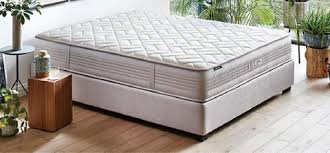Which Mattress is Best for Autumn? A Practical Mattress Comparison Guide

As the crisp air of autumn settles in and the days grow shorter, it’s essential to reevaluate your sleeping arrangements to ensure comfort and warmth during the cooler nights. Choosing the right mattress can significantly impact your sleep quality, making it crucial to find one that aligns with your seasonal needs. Autumn presents a unique set of challenges, such as fluctuating temperatures and the potential for allergies, which can affect how well you sleep.
A comprehensive mattress comparison guide can help you navigate the various options available on the market, ensuring you make an informed decision. Factors such as material, firmness, and temperature regulation play vital roles in determining which mattress will serve you best during this transitional season.
In this blog post, we’ll explore different types of mattresses, their characteristics, and how to choose the right one for autumn. With the right mattress, you can enjoy cozy, restful nights as the leaves change and the temperatures drop.
Understanding Mattress Types for Autumn
When selecting a mattress for autumn, it’s important to understand the various types available and how they perform in cooler temperatures. The most common types include innerspring, memory foam, latex, and hybrid mattresses. Each type has its unique benefits and drawbacks that can influence your comfort level during the fall.
Innerspring mattresses are known for their bouncy feel and support but may not retain heat as effectively as other types. Memory foam mattresses, in contrast, contour to your body, providing excellent pressure relief and insulation. Latex mattresses offer a breathable option that can keep you warm without overheating. Hybrid mattresses combine features from both innerspring and foam, providing a balanced sleeping experience. A mattress comparison guide can help clarify these differences, allowing you to make the best choice for your autumn sleeping needs.
Material Considerations for Comfort
The materials used in a mattress significantly affect its comfort and insulation properties, which are particularly important during autumn. Memory foam, for instance, is known for its ability to retain heat, making it an excellent choice for cooler months. It contours to your body, providing support while also keeping you snug.
Latex mattresses offer a more breathable option, allowing for airflow that can prevent overheating. They provide a degree of warmth while also being resilient and supportive. Innerspring mattresses may require an additional layer, such as a mattress topper, to enhance their comfort and warmth. A detailed mattress comparison guide will highlight the thermal properties of different materials, helping you choose a mattress that keeps you cozy throughout autumn.
Firmness Levels and Sleeping Positions
Selecting the right firmness level is critical for ensuring a comfortable night’s sleep, especially as temperatures drop. The firmness of a mattress can greatly influence spinal alignment, pressure relief, and overall comfort. Sleep experts typically recommend softer mattresses for side sleepers, as they provide better contouring for the shoulders and hips.
For back and stomach sleepers, a firmer mattress is often preferred to maintain proper spinal alignment. During autumn, as you may be spending more time indoors, it’s essential to have a mattress that suits your sleeping position. A mattress comparison guide usually categorizes options by firmness levels, making it easier for you to find a mattress that meets your specific needs and keeps you cozy.
Temperature Regulation Features
As the weather cools, temperature regulation becomes increasingly important. Some mattresses are designed with cooling technologies that help dissipate heat and maintain a comfortable sleeping surface. While this feature may seem less critical in autumn, it can still prevent overheating and sweating, contributing to a more pleasant sleep experience.
Look for mattresses that incorporate breathable materials, such as gel-infused memory foam or natural latex, which allow for better airflow. A mattress comparison guide will often highlight these temperature-regulating features, helping you select a mattress that will keep you comfortable as the seasons change. Optimal temperature regulation is key to ensuring restful sleep throughout autumn.
Durability and Longevity
Investing in a quality mattress is crucial for ensuring long-term comfort and support. Durability is an essential factor to consider, as a mattress that wears out quickly can lead to discomfort and disrupted sleep. High-density memory foam, natural latex, and robust innerspring coils generally offer better longevity compared to lower-quality materials.
A mattress comparison guide typically includes information on the lifespan of various mattress types, allowing you to evaluate which options will stand the test of time. When selecting a mattress, look for warranties that reflect the manufacturer’s confidence in their product, as this can provide peace of mind regarding your investment.
Budget Considerations for Autumn
When searching for the perfect autumn mattress, budget plays a significant role in your decision-making process. Mattress prices can vary widely based on factors such as material, brand, and additional features. While it may be tempting to choose the cheapest option, investing in a quality mattress often pays off in terms of comfort and durability.
A mattress comparison guide can help you identify high-quality, budget-friendly options that meet your needs. It’s advisable to take advantage of seasonal sales, especially during autumn promotions, to find a mattress that fits your budget without compromising quality. By setting a clear budget and researching your options, you can find a cozy mattress that will keep you warm throughout the autumn months.
FAQs
What type of mattress is best for autumn?
Memory foam and latex mattresses are excellent choices for autumn due to their insulation properties and comfort.
How do I choose the right firmness level?
Consider your sleeping position; side sleepers usually prefer softer mattresses, while back and stomach sleepers benefit from firmer options.
Can a mattress regulate temperature?
Yes, some mattresses feature cooling technologies and breathable materials that help regulate temperature and prevent overheating.
How long should a mattress last?
Most mattresses last between 7 to 10 years, depending on the quality of materials and usage.
What is a good budget for a quality mattress?
A budget of $800 to $1,500 is generally recommended for a quality mattress, but seasonal sales can offer great deals.
Conclusion
Selecting the right mattress for autumn is essential for maintaining comfort and ensuring restful sleep during the cooler months. By understanding the different types of mattresses, their materials, firmness levels, and temperature regulation features, you can make an informed decision that suits your needs. Utilizing a comprehensive mattress comparison guide will help you navigate your options and identify the mattress that will keep you cozy all season long.
As you invest in your sleep environment, remember to consider durability and budget constraints, ensuring that you find a quality product that lasts. With the right mattress, you can enjoy warm, restful nights, making your autumn experience all the more enjoyable. Embrace the comfort and support of a well-chosen mattress, and you’ll be well on your way to a cozy and restorative autumn season.





